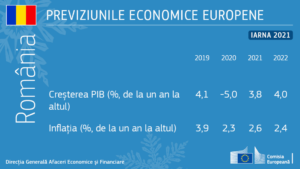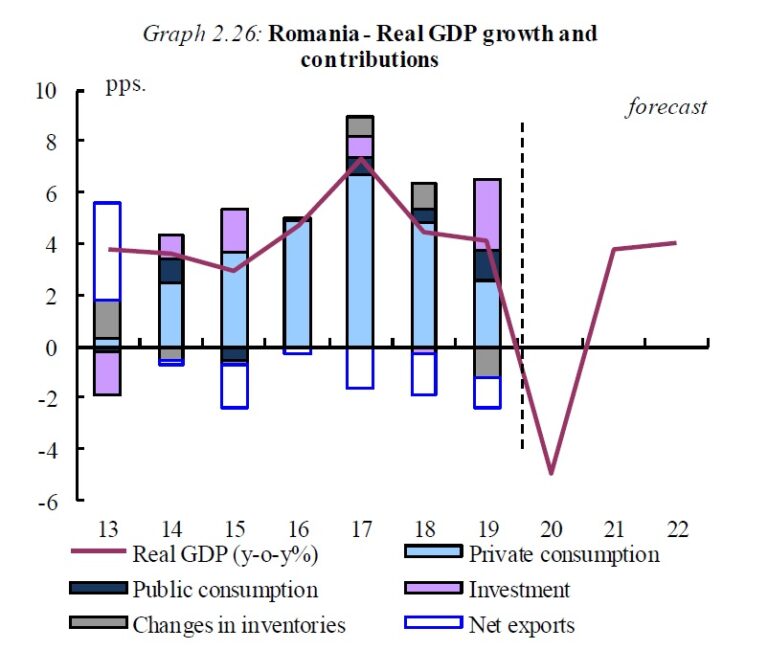 Romania’s GDP will increase by 3.8% in 2021 and 4% in 2022, respectively, according to the winter economic forecasts, published on Thursday by the European Commission.
Romania’s GDP will increase by 3.8% in 2021 and 4% in 2022, respectively, according to the winter economic forecasts, published on Thursday by the European Commission.
Inflation in Romania would be 2.6% this year and 2.4% next year.
The Commission expects a strong return of the private consumption in the second half of this year, as the vaccination campaign makes it possible to ease restrictions. Investments would also remain robust, supported mainly by the construction sector.
„We anticipate a return of exports, in the context of improving economic conditions among Romania’s main trading partners. However, we expect a negative contribution of exports to the economic growth„, the EC report shows.
The report did not take into account the impact of expenditures incurred in the context of the National Recovery and Resilience Plan.
In this context, the Commission states that its forecast might be too pessimistic, as the rapid implementation of this Plan, as well as the improvement of public finances, are likely to lead to stronger economic growth in 2021.
In 2020, a sharp decline in energy prices and a reduced aggregate demand pushed inflation to 2.3% from 3.9% in 2019. In 2021, some inflationary pressures are expected from higher oil prices and following the liberalization of the electricity market, on 1 January. The average annual inflation rate is projected to increase slightly to 2.6% in 2021 and to decline moderately to 2.4% in 2022.
Growth in Romania, in line with the EU
According to the economic forecasts for the winter of 2021, the Eurozone economy will grow by 3.8% in both 2021 and 2022. The EU economy will grow by 3.7% in 2021 and by 3.9% in 2022.
Europe is still facing the coronavirus pandemic. The increase in the number of cases, along with the emergence of new, more contagious coronavirus strains, has forced many Member States to reintroduce or tighten the measures taken to limit the spread of the virus. At the same time, the start of vaccination programs across the EU provides grounds for cautious optimism.
The economic growth is expected to recover, as the measures to limit the spread of the virus loosen up.
Eurozone and EU economies are expected to reach pre-crisis production levels earlier than anticipated with the autumn 2020 economic outlook, largely due to the higher than anticipated growth rate forecasted in the second half of 2021 and 2022.
The economic impact of the pandemic remains uneven from one Member State to another and it is also expected that the recovery pace will vary significantly.
Forecasts estimate that inflation in the Eurozone will rise from 0.3% in 2020 to 1.4% in 2021, before declining slightly to 1.3% in 2022.
In terms of negative risks, the pandemic could be in the short term more persistent or more severe than expected in this forecast, or there could be delays in the implementation of vaccination programs. This could delay the relaxation of measures taken to limit the spread of the virus, which would affect the timing and strength of the expected recovery. There is also a risk that the crisis will leave deeper scars on the EU’s economic and social structure, especially through large-scale bankruptcies and job losses. That would also affect the financial sector, would increase long-term unemployment and deepen inequalities.










